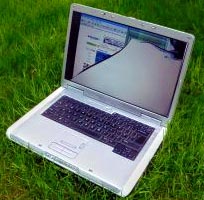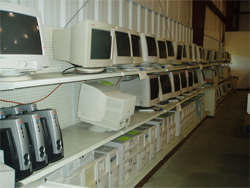Technology is constantly evolving, bringing us new and better devices that leave us questioning what we ever thought was so great about those old ones in the first place. Last year’s mobile phones, TVs, and computers that use LCD screens are now dated by ever-improving models and a better grade of LCD – so replacing and upgrading the technology is important.
What happens when they’re thrown away?
So, what should we do with these old devices and LCD hardware with a lifespan of 10-20 years that we now have lying sad and forgotten in the corner, in the attic, or out on the curb? Recycle them, of course! LCDs have their own regulations for recycling, so here are some tips on how to recycle your old LCD screens and devices.
LCDs that were manufactured before 2009 use cold cathode fluorescent lamps (CCFLs) to backlight the display. These CCFL displays contain mercury, which makes them hazardous to dispose of or incinerate. Other electronic products can contain hazardous chemicals, such as heavy metals and brominated flame retardants. These materials can leak out of landfills and into groundwater, streams, etc., or can be transformed into “super toxicants” while being incinerated. Throwing away these types of devices can clearly be harmful, even today. There are still some harmful chemicals and materials inside electronic devices that will damage the environment if they aren’t disposed of properly—and many times, they aren’t.
Another big problem is that because of the turn-over rate of these electronic devices, LCD screens are just left sitting in landfills. Since they need to be disposed of in certain ways, they’re left to sit and waste away, taking up space in the landfills. Many states have laws prohibiting the disposal of electronic waste in landfills. Because of that, LCDs are likely to sit and rot, or be incinerated in large quantities. They also could be shipped off to other countries that don’t have these prohibiting laws, which is definitely not the best solution to the problem.
Still Working Devices
Many times, we get new and better gadgets before the current one even needs replacing. That old TV still works, still shows the picture clearly and there’s not a scratch on it. But this new one…well, it’s bigger. It has the Internet capabilities built right in and it can do backflips! Okay, not really, but the point is that we tend to get something new while we still have a perfectly functioning, but slightly older, model. Instead of keeping it in the attic, you can donate it or recycle it to companies and stores in your area that will take it. These places can resell it to people who don’t have the latest backflipping TV, mobile phone or tablet.
Throwing away functioning devices is wasteful when it can be used and appreciated by someone else. With cellphones, some carriers have donation boxes where you can donate your old, still working cellphone to less fortunate people and families. This is environmentally, economically and morally friendly.
Broken Devices

One option for a truly broken product is to take it to an electronics shop or store to see if it can be refurbished. Instead of claiming a lost cause when a screen breaks, see if it can be fixed. Apple has a service where they will take your old and broken phone and use it as part of the study to help improve the next product they’re trying to create.
Since the issue was raised, there has been much research performed on the best method for recycling LCD screens. Different facilities have different ideas, practices and processes. Some of these processes include removing the hazardous waste materials from the screens/monitors; others believe in completely taking apart the device/screen piece by piece and seeing what can be resold or refurbished, then disposing of the rest in environmentally friendly ways.
Almost 98% of an LCD monitor can be recycled. All plastics are removed to be recycled into new products. Printed circuit boards can be recovered from LCD recycling and smelted to recover valuable metals, while cabling is stripped to reclaim copper and other metals.
Considering how frequently we get new electronic devices, being smart about LCD recycling can make a huge difference. General Digital encourages all of its customers to recycle their used computer monitors and televisions. Learn more about e-cycling from Maryland’s Department of the Environment, and Maine’s Department of Environmental Protection.


